Standing on the Black Sea coast, Sukhum is one of the oldest cities in Europe. Even 2.5 thousand years ago, a Greek colony was located in its place. In his lifetime, he saw conquest, destruction and rebirth. And in our time, his fate cannot be called easy - the consequences of the Georgian-Abkhaz conflict left an unhealed, deep mark on him.
Nevertheless, Sukhum is primarily a resort town. Let him remember the times better, today tourists also have something to look at. The ruins of ancient fortresses, monumental buildings of the Soviet era, museums, city sculptures, beautiful views from the embankment - all this awaits guests who decide to come to this place, caressed by the sun and soft breeze.
What to see and where to go in Sukhum?
The most interesting and beautiful places for walking. Photos and a short description.
- Sukhumi embankment
- Brekhalovka
- Colonnade on the embankment
- Sculpture Nika and gramophone
- Monument to Muhajirs
- Residence of the President of the Republic of Abkhazia
- City administration building
- The building of the Parliament of Abkhazia
- Abkhaz State Museum
- Drama Theater named after S. Chanba
- Russian Drama Theater named after F. A. Iskander
- Blagoveshchensky cathedral
- Koman Monastery
- Sukhum railway station
- Railway platform Guma
- Fortress of Dioscuria
- Bagrat Castle
- Besletsky bridge
- Apery
- Botanical Garden
Sukhumi embankment
The embankment was laid in the late XIX - early XX centuries after the end of the Russian-Turkish war. There are historical buildings from the early 1900s. There are also several picturesque architectural monuments from the middle of the century. The walking alley consists of two promenades - the embankments of Dioscuri (from the pier to the seaport) and Mahadzhirs (from the port to the confluence of the Basla River into the sea).

"Brekhalovka"
This is the name of a place on the city embankment where local residents (mostly men) traditionally meet to discuss business, drink coffee, play dominoes and just stare at passers-by. Such a pastime looks peculiar, but very well characterizes the local mentality. For the sake of interest, tourists can also look here and listen to lively conversations.
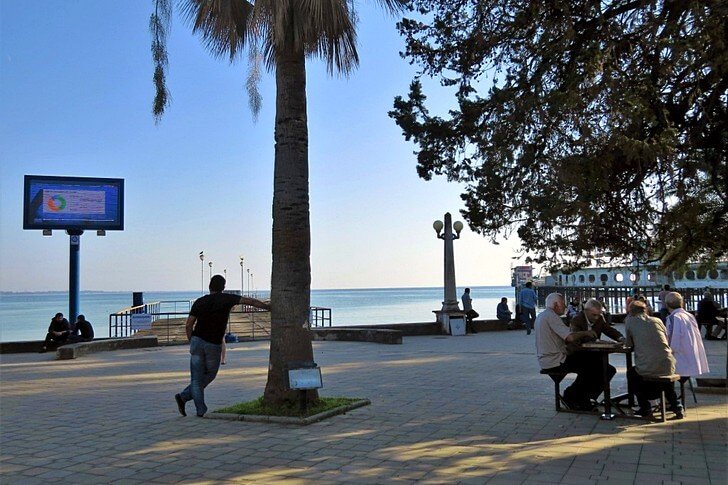
Colonnade on the embankment
The neoclassical colonnade, built in 1948 according to the project of Y. O. Kvaratskhelia, has been decorating the landscape for many decades. Through it you can go to the city embankment. The construction is one of the most popular sights of the city, moreover, it is its emblem and symbol. It is interesting that the colonnades in other resort towns of the Black Sea coast were built according to the Sukhumi type.

Sculpture "Nika and gramophone"
A small sculptural composition decorating the Sukhumi embankment. It was created based on the work of F. Iskander and depicts a girl with a gramophone. The statue was installed in 2012, it was made by the sculptor A. Labahua. The statue belongs to the type of "genre urban sculpture". The works of this style are characterized by the lack of monumentality, simplicity of execution and proximity to the viewer.

Monument to Muhajirs
The monument is dedicated to the heroes of the Georgian-Abkhaz war of 1992–93. It was solemnly installed in Sukhum in 2010 on the City Liberation Day in the presence of officials. The composition is a bronze sculpture weighing 2.7 tons on a round pedestal lined with polished red tiles. The statue was created by the sculptor G. Lakoba and made in Minsk.

Residence of the President of the Republic of Abkhazia
The residence of the head of Abkhazia is located in the building of the former dacha of I.V. Stalin, located in the middle of the Sukhum arboretum. The house was built in a strict classical style with a tendency towards monumentalism characteristic of Soviet architecture. The central façade consists of two rows of arched galleries; symmetrical side wings are devoid of pretentious decor. This building is one of the few that did not suffer during the hostilities.
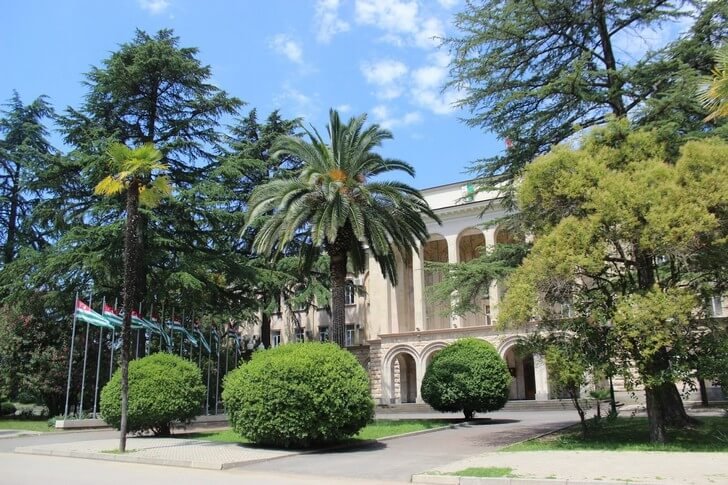
City administration building
The city government is housed in a historical building of 1914 - one of the oldest buildings in the capital of Abkhazia, better known among locals as the "clock house". It is located on one of the central streets of the city and is its decoration. From an architectural point of view, its style tends to be more modern, although neoclassical features also slip through the appearance of the facade.
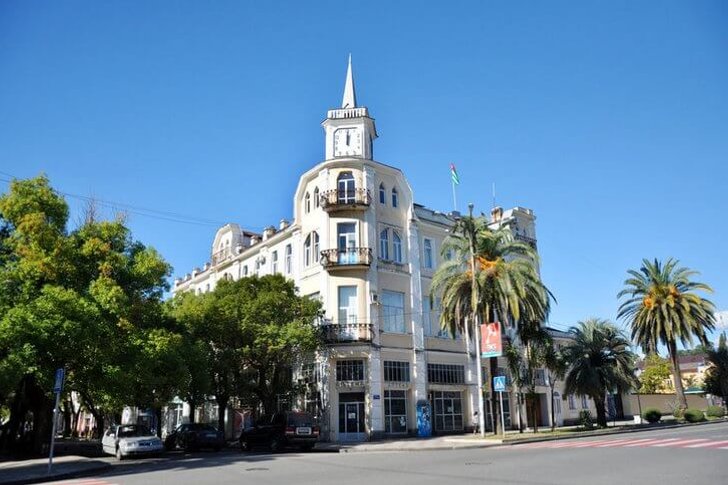
The building of the Parliament of Abkhazia
The parliament building was erected in the 1960s. In those years, such a monumental building testified to the well-being of the people and the wealth of the region. In 1993, during the Georgian-Abkhaz war, it was badly damaged as a result of shelling and bombing. At the moment, the building is in a dilapidated state, although the Abkhazian flag flies over it, and rallies are held on the square from time to time.
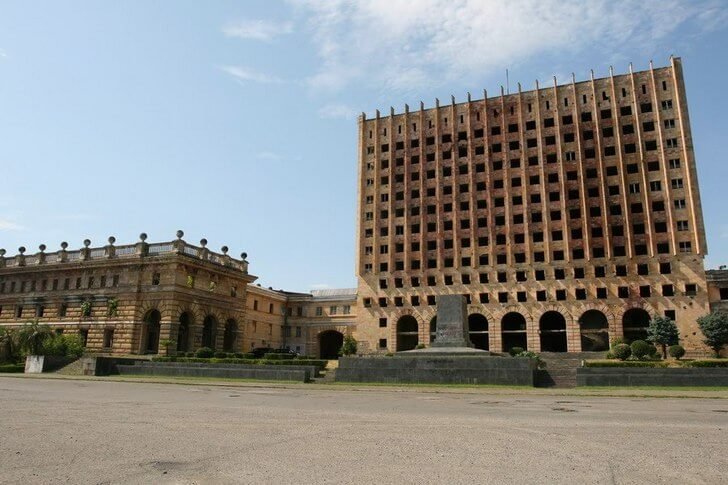
Abkhaz State Museum
Museum of local lore, where valuable collections of great historical significance are exhibited. Here you can see expositions dedicated to the peoples of the Caucasus, ancient Egyptian, Greek and Byzantine artifacts, as well as items related to the Middle Ages. Archaeological, natural science and ethnographic collections are of great interest.
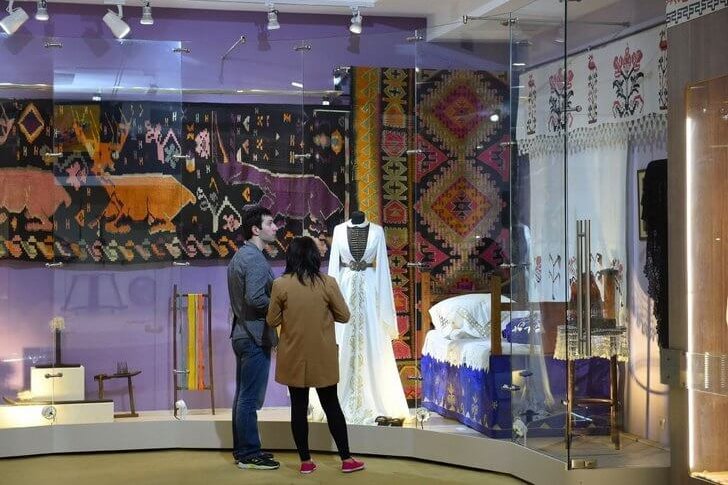
Drama Theater named after S. Chanba
The main dramatic stage of Abkhazia, created in 1931. It is located in a building of the beginning of the 20th century, which burned down in 1943 as a result of an air strike and was completely reconstructed in 1952 according to the project of M. Chkhikvadze. After the restoration, the building acquired the features of the Stalinist Empire style. Opposite the entrance to the theater is a fountain with griffins, popular with tourists, built in 1947.
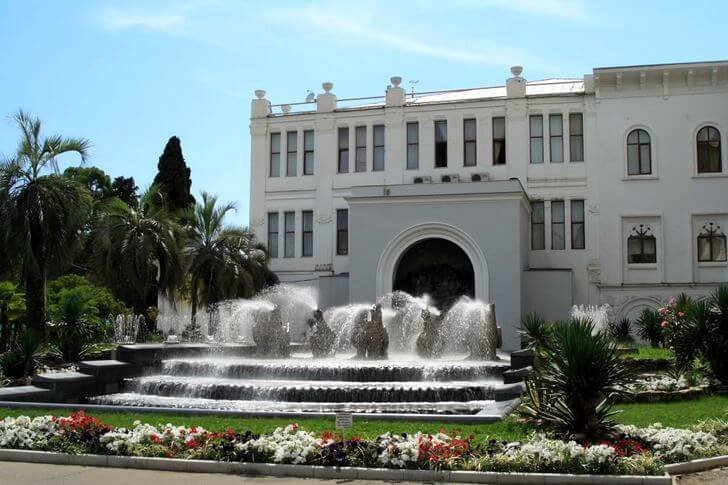
Russian Drama Theater named after F. A. Iskander
The scene was founded in 1981 as a Youth Theater. During the hostilities of the Georgian-Abkhaz conflict, the building was destroyed, and the theater ceased to exist. It was revived only in the 2000s. In 2014, a new stage was repaired (almost rebuilt), thereby completely restoring theatrical life. In 2017, the institution was named after the famous writer F. A. Iskander.
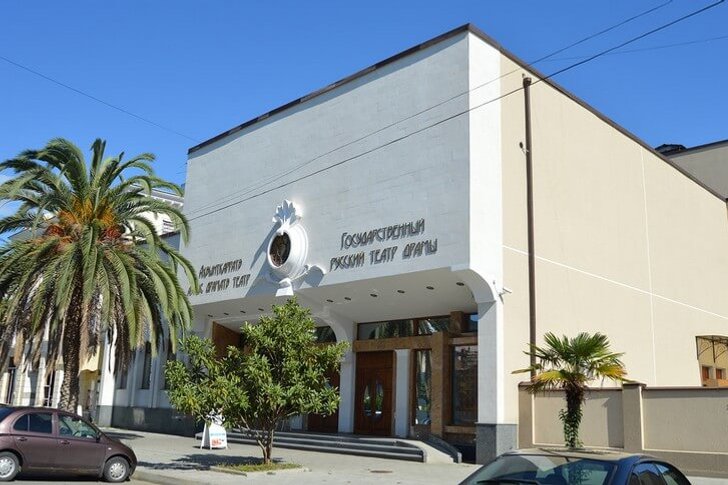
Blagoveshchensky cathedral
Sukhum Cathedral, which is considered the main temple of the non-canonical Abkhazian Orthodox Church. The building was built in 1915 at the expense of the Greek Christian community. Obviously, the architect preferred the Byzantine style. In the 1980s, the building underwent a major renovation. The main shrine of the temple is the icon and a particle of the relics of the Great Martyr Panteleimon.
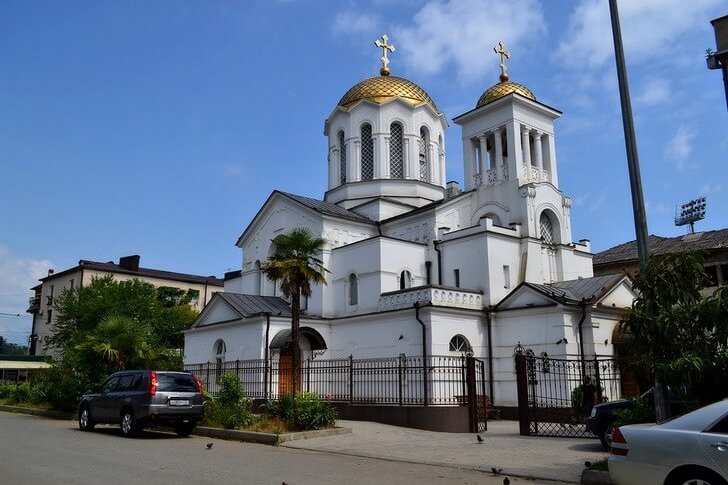
Koman Monastery
Orthodox men's monastery, located near the village of Koman. It was founded in the 11th century on the site where the tomb of St. John Chrysostom was located before being transferred to Constantinople. Today, a particle of his relics is kept in the monastery. The monastery is a popular tourist attraction and a place of pilgrimage, receiving tens of thousands of visitors every year.

Sukhum railway station
The modern station building was erected in the 1950s in the grandiose Stalinist Empire style. Before the start of the Georgian-Abkhazian conflict, trains were sent from here to Moscow, Yerevan, Tbilisi, Rostov-on-Don, Batumi, Sochi, but with the outbreak of hostilities, the message completely stopped. From the beginning of the 2000s, trains began to run again, and today it is again possible to get from Sukhum to the Russian capital.

Railway platform "Guma"
The railway platform is located on the territory of Sukhum. It is known for the fact that the monkey nursery and the Botanical Garden are located in the vicinity. The station building itself is a gallery with a suite of arched openings and a wide staircase, framed by decorative railings and similar to the main entrance to the palace. Guma was built in 1940, today it has lost its significance as a transport point, but has retained its value as an architectural monument.
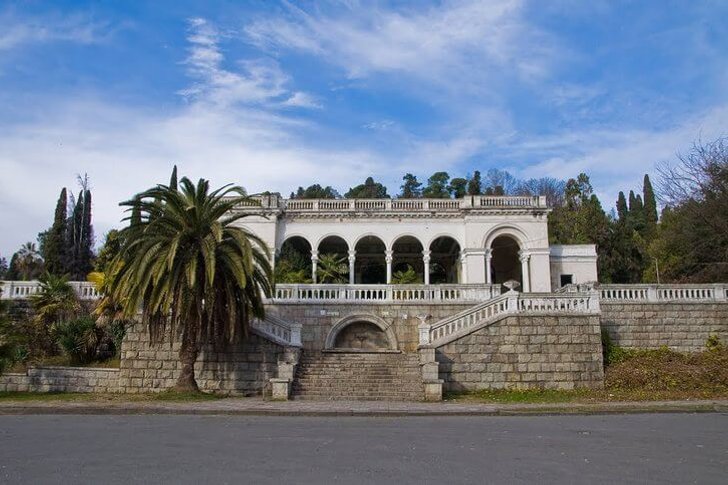
Fortress of Dioscuria
Former military fort and garrison, now in ruins. Its history began in the era of the ancient Greeks, who were the first to build a port on this site. Then they were replaced by the Romans, Genoese and Ottoman Turks, who gave the fortress the name Sukhum-Kale (hence the name of the city). After the conquest of the Caucasus by the Russian Empire, military units and a prison were located here. In Soviet times, a restaurant operated in one of the towers, abandoned in the 1990s.
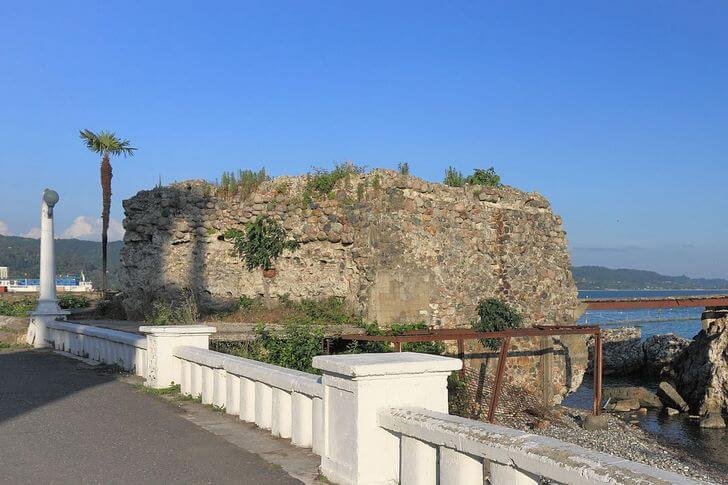
Bagrat Castle
Remains of a fortress of the XII-XIII centuries, built during the heyday of the Abkhazian kingdom. At that time, she defended the southern approaches to the city and exercised control over the port. The thickness of the walls of the castle reached 2 meters, the height - up to 8 meters. In the 20th century, archaeological excavations were carried out on the territory of the fortification, as a result of which medieval artifacts were discovered: jewelry, coins, dishes and other household utensils.
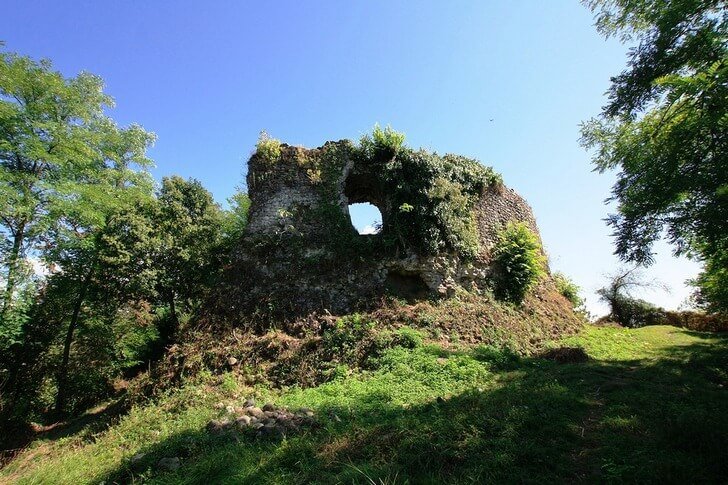
Besletsky bridge
A bridge in the form of a 13-meter stone arch spanning the Basla River. It was built over 800 years ago and has survived to this day in good condition. For many years, this passage was considered a strategic object, as it opened the way to the mountains. On the side surface of the structure, one can see an inscription in the ancient Georgian language and an image of a cross.
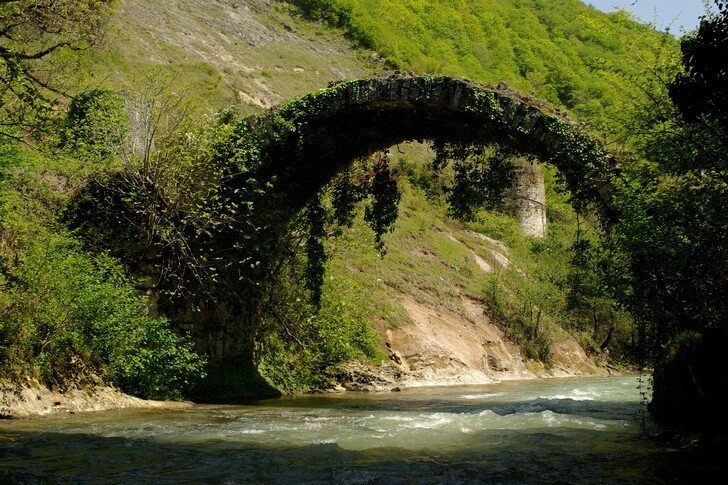
Apery
The nursery was founded in 1927 on the initiative of N. A. Semashko as an experimental laboratory for the study of human diseases. That is, the animals in it were used as experimental material. Today you can visit it as a zoo: see animals in cages and feed them. Those monkeys on which experiments are being carried out are not shown to people, since they are kept in isolated rooms.

Botanical Garden
The Sukhumi garden is one of the oldest in the Caucasus, it was founded in 1838. During the Russo-Turkish War of 1877–78, almost all the plantings perished; they were revived only in 1894. Today, species from America, Southeast Asia, Australia, and the Mediterranean countries grow on its territory. The oldest tree is considered to be a 300-year-old Caucasian linden, which grew here even before the foundation of the garden.
